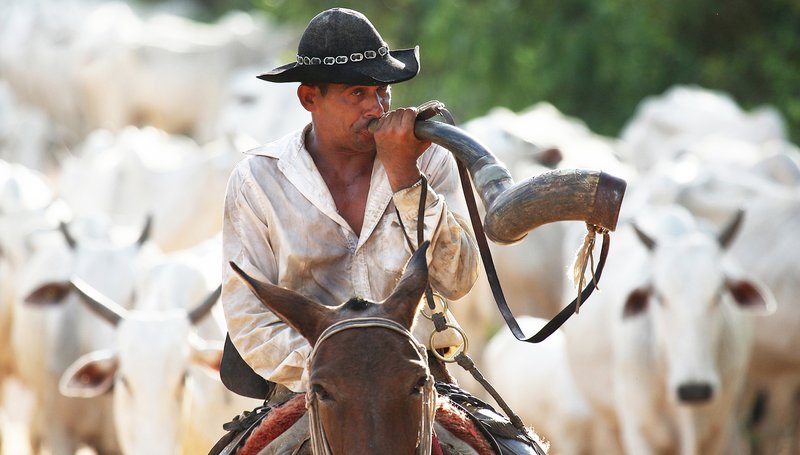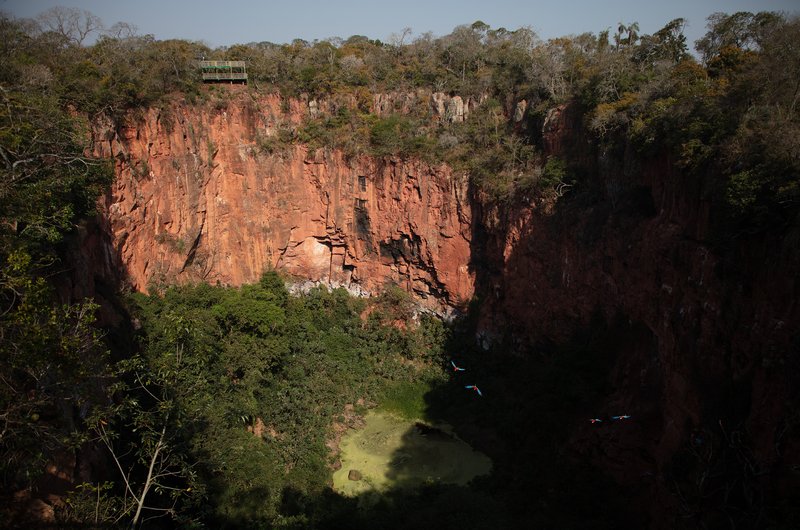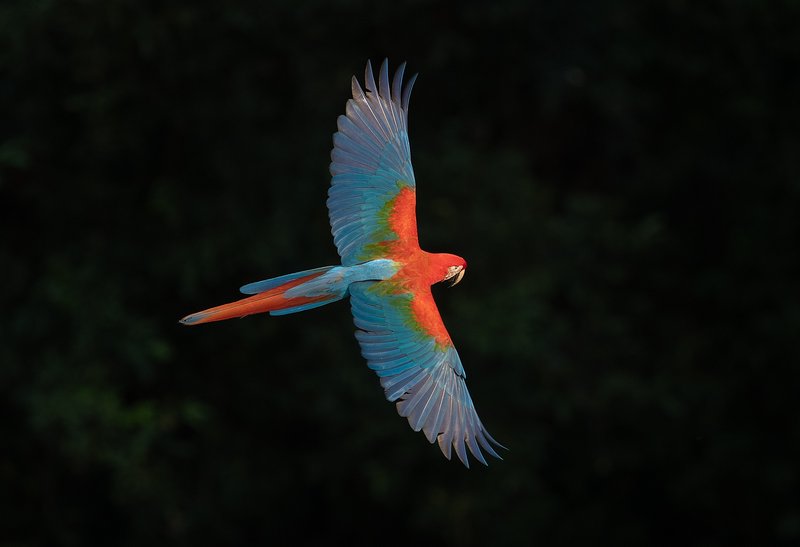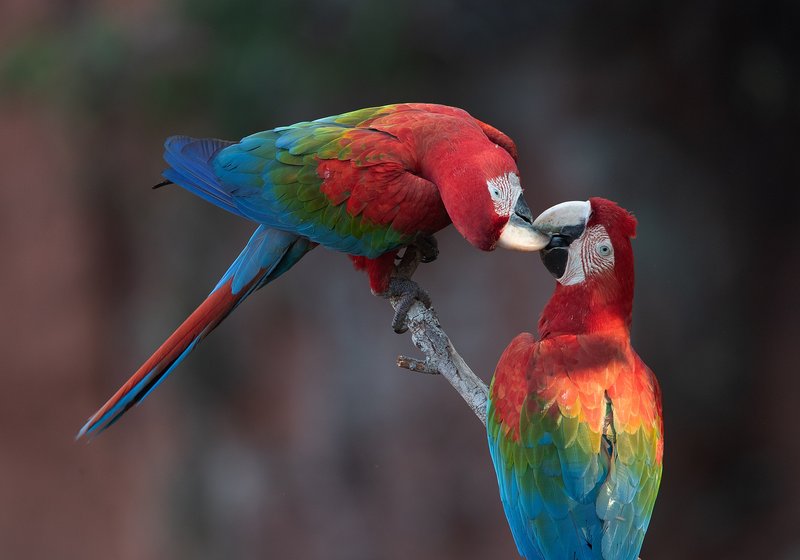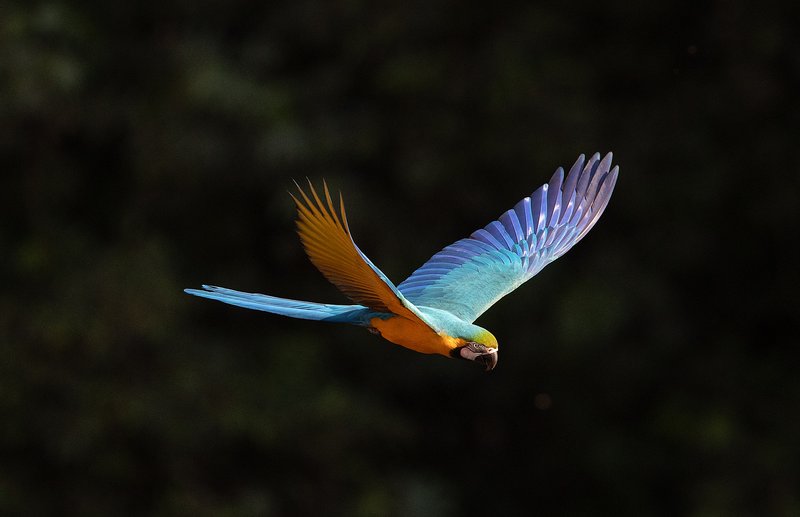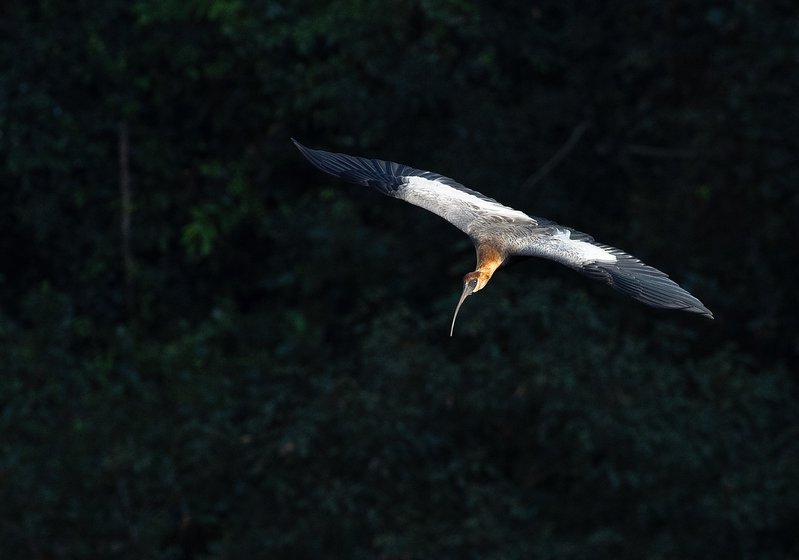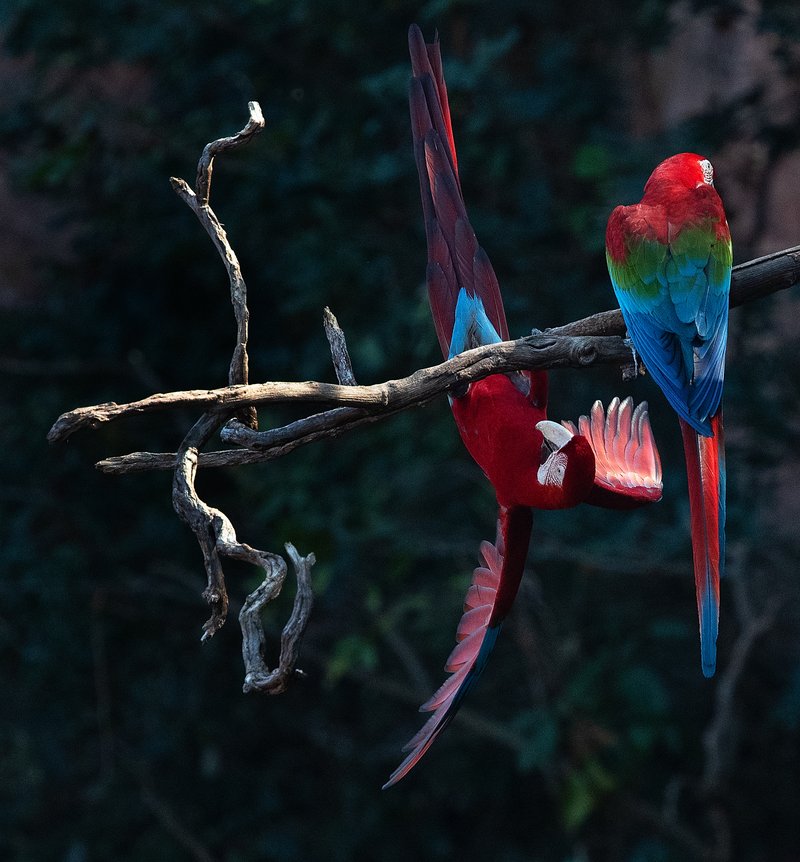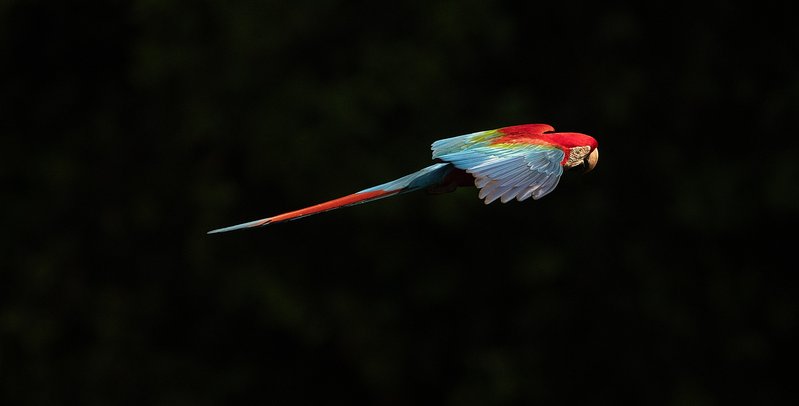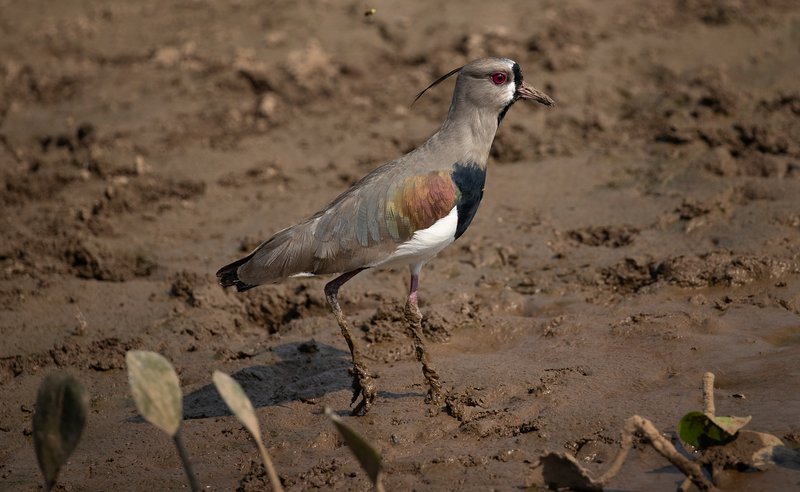The Pantanal Revisited
Buraco das Araras, Jardim, South Pantanal, Brazil
Before joining the group, we headed out on our own into the South Pantanal to visit Buraco das Araras, a geological formation created by the collapse of boulders located in the middle of the cerrado in the state of Mato Grosso do Sul. The crater is a geological formation known as a doline, a natural enclosed depression found in karst landscapes. There are only five known dolines in the world and Buraco das Araras is the second largest. During the day, a significant number of Scarlet and Green Macaws, a few Blue and Yellow Macaws, Buff-necked Ibises and numerous other birds visit the crater to feed.
Arriving into Guarulhos International Airport in São Paulo on an international flight and transferring to a domestic flight is an experience. It is actually an organized and logical process if you have time and a hectic and stressful experience if you only have a two-hour layover. We had less than that but the option was an eight-hour layover and driving to our destination, 300 km away, in the dark. The lines are numerous, but efficient. Thirty minutes to get through immigration, twenty minutes to get through baggage claim and customs, a confusing twenty minutes to get to domestic baggage check-in and another twenty five minutes to get to the gate and be among the last passengers to get onto the plane. Because LATAM is a Delta partner, I was able to book priority seats on all of our flights. When flying domestically, this turned out to always be in the second row and they actually block the middle seat, know your name and feed you.
We were flying to Campo Grande in the south Pantanal and then renting a car and driving 300 km to Jardim. I had printed out maps beforehand, anticipating that we would not have access to Google Maps, even though I had reserved a car with navigation. My assumption was correct and it was a process getting out of Campo Grande onto the road to Jardim. It is surprisingly easy if you know the way and surprisingly challenging if you don’t. Thanks to Cynny’s Duolingo Portuguese training and a number of friendly folks we stopped to chat with, we eventually found our way. The roads were excellent and most of the other drivers didn’t exceed 150 percent of the posted speed limits.
Buraco das Araras is a popular photo destination. You make a reservation and then they assign you a guide. You are limited to two photo platforms, but they are large and appropriately positioned for morning and afternoon photography. The guide may or may not speak English. Ours did not, so he was more of an escort than a guide. We arrived before they opened, got signed in and were on the platform by the time sunlight reached inside of the doline. We stayed for four hours in the morning and came back for two hours in the afternoon. The birds were most active between 7-9 a.m. and 2-4 p.m. When the afternoon sun dropped below the rim, the birds flew off to their nearby roosting places.
The Pantanal, Brazil
It had been almost 14 years since my first trip to the Pantanal, so I had plenty of time to plan. It is a vast area and not an easy place to visit unless you go with an organized group. A boat is required and the primary habitat is at the end of the poorly maintained Transpantaneira, a 91-mile long dirt road, which runs from Poconé to Porto Jofre, Brazil. The road includes 122 wooden bridges, perhaps one less after our van was impaled by a large wooden cross beam from one on the drive south.
In December 2009, I was in Brazil for the wedding of a friend who had left UNC-CH shortly after I did and gone back to work in the industry. Later, he would join me at the University of Miami. None of that is relevant other than to explain why I was in Brazil and why I decided to stay an extra week and try to photograph jaguars in the Pantanal, a vast wilderness that encompasses the world's largest tropical wetland and the world’s largest flooded grassland. It is habitat for the largest jaguar population on Earth.
The wedding was lovely and the next day, we flew to Cuiaba, about a two-hour direct flight from São Paulo. Somehow, TAM Airlines managed to lose my luggage on the two-hour direct flight. That included my tripods, remotes, beanbags and numerous other photography accessories that I could not manage to fit in my carry-on allowance, as well as my clothes. We met our guide and he suggested we have lunch nearby and wait for the next flight. We did, but still no luggage and no information or tracking. We had a long drive ahead of us, so against my better judgment, we left Cuiaba.
At lunch, our guide had informed us that much of the Pantanal was flooded, that we would not be able to see jaguars and that many of our accommodations had been changed. He could not explain to me why I was not informed of this prior to our departure, why we were not given the option to reschedule or cancel or even where we would be going. Nevertheless, off we went.
We spent a week driving around the open parts of the road with only one day on the water. For most of that time, the vehicle was not suitable for photography. The guide had not been informed that I was a photographer. I finally saw my duffel bag five days later, a day before it was time to fly back to São Paulo and connect to Iguassu. I should have spent more quality time with it, because it did not arrive in Iguassu with us, or ever. The next time I saw it was two weeks later, when TAM Airlines returned it to the airport in Miami, without any explanation and certainly without an apology or any compensation. TAM Airlines no longer exists, merging with LAN to form the LATAM Airlines Group (that filed for bankruptcy in May 2020). I wish I could take some credit for their downfall, but I can’t.
My dream of returning to the Pantanal almost went up in smoke, when in 2020 more than a quarter of the Pantanal burned while former President Bolsonaro’s government did little to stop the wildfires. The Associated Press quoted Daniel Moura, who owns an eco-tourism company in the area, “We used to see jaguars here all the time; I once saw 16 jaguars in a single day,” he said while on the riverbank in Encontro das Aguas State Park, which had 84% of its vegetation destroyed.
Of course, it should not surprise anyone that in 2022, our President, the Orange Idiot, endorsing Bolsonaro’s re-election bid, wrote on his social media site, “‘Tropical Trump’ as he is affectionately called, has done a GREAT job for the wonderful people of Brazil.” Fortunately, neither Trump nor Bolsonaro are still in power and the jaguar population has begun to recover.
After talking to several photographers and friends, I selected a small group photo trip that offered five full days on the Cuiaba River looking for jaguars. Most trips offer only four. The trip also included a few other stops that were advertised as prime birding locations including a couple of days at Pousada Rio Claro in Poconé, Mato Grosso.
